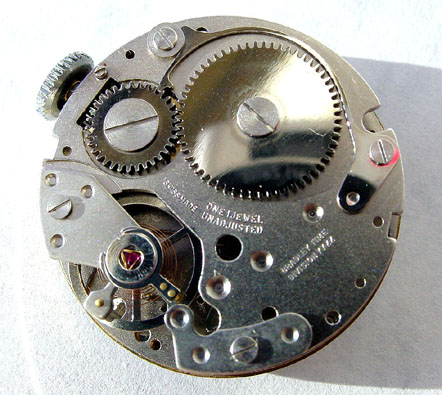The Miracle of the Pin Lever Movement
by Richard Paige
|
We focus a lot of our attentions here on TimeZone towards what constitutes a high quality movement: is it workmanship, accuracy, finish, longevity, or a combination of all? But one of the most remarkable achievements in the history of the mechanical watch was introduced by American watch companies at the turn of the century, that is, the ability to produce a watch that only concentrated on accuracy, and was produced strictly as an inexpensive commodity. The most renowned company producing these "cheap" machines was the Ingersoll Watch company. Their goal in the beginning was to produce a watch which equaled a day's pay at the turn of the century: $1.00. By 1905, they had perfected this technique and were producing and successfully selling millions of watches, and by the end of World War I they had produced in excess of 50 million watches. The company was purchased by the Waterbury Clock Company in 1922, but they continued to market the watches under the Ingersoll name. Later they were purchased by U.S. Time in 1944, which eventually evolved into the Timex trademark. How they achieved this production miracle was by producing a watch with the bare essentials: no jewels (or very few), cheaper metals, and no finish to speak of. These movements were called Pin Lever movements for the simple reason that the "expensive" pallet fork jewels were substituted by metal pins. Pallets are usually made of hard stone, such as sapphire, in more traditional quality movements. 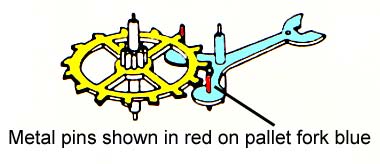
But the crowning achievement of these watches was that they actually told remarkably accurate time, and some rivaled the accuracy of watches costing thousands of dollars more. These watches told time faithfully until they quit, and since it would cost more to service the watch than it would be to buy another, a planned obsolescence product was realized. These watches never claimed to be more than a good buy, and certainly didn't carry any status, but they were an excellent value, and gave the wearer many years of faithful service. The odd thing is that many of these cheap watches actually attained collectability status, especially the Novelty watch. The most successful of these products were produced by U.S. Time (Timex), who collaborated and manufactured copyrighted watches for Walt Disney Productions. They reached their pinnacle in the 1950's, producing a myriad of Disney character watches: Pinocchio, Jiminy Cricket, Alice in Wonderland, Cinderella, Snow White, The 7 Dwarfs, Daisy Duck, Donald Duck, and of course Mickey Mouse. These were cleverly "packaged" in boxes portraying cartoon like stories. As an example, the Cinderella watch from below was packaged in a "glass slipper" inside a cartoon like box. 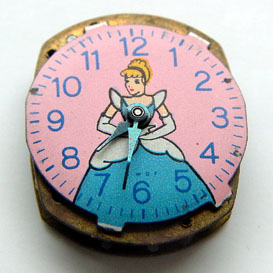
A "high quality" pin lever movement with 1 jewel. This is from a Bradley Mickey Mouse watch
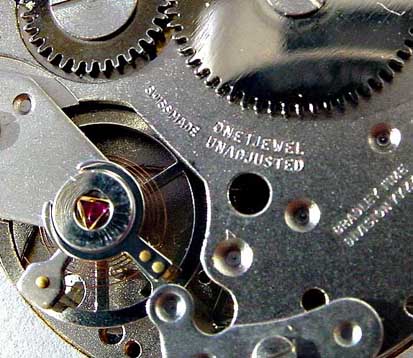 Nothing can drive a watch enthusiast crazier than to know that a mechanical watch costing under $10.00 can match the timekeeping ability of a $1,000 watch. I suppose in the final analysis that the ability to keep good time doesn't necessarily indicate the intrinsic value of the movement.
Richard Paige @ Timezone.com
|

Back to top of page |
Return to Time Zone
Home Page
Copyright © 2001-2004 A Bid Of Time, Inc., All Rights Reserved
E-mail: info@TimeZone.com
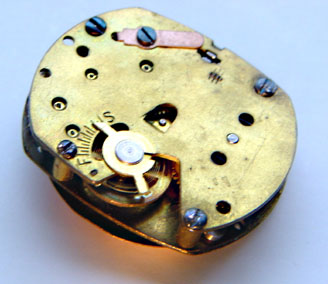 To finish the watch, yet keep to the philosophy of the price, the cases were also cheaply produced and were usually of plated base metal. The dials were made of coated paper board, but were eventually made of base metal towards the mid century.
To finish the watch, yet keep to the philosophy of the price, the cases were also cheaply produced and were usually of plated base metal. The dials were made of coated paper board, but were eventually made of base metal towards the mid century. 